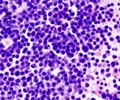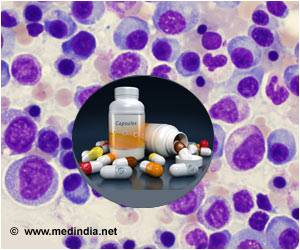- Multiple myeloma is a cancer that begins in plasma cells, a type of white blood cell. These cells are part of the immune system, which helps protect the body from germs and other harmful substances
- A new drug called modakafusp alfa has shown to decrease cancer by at least 50%, making it a promising treatment modality, especially when other usual treatments are no longer effective //
565 Final Results from the First-in-Human Phase 1/2 Study of Modakafusp Alfa, an Immune-Targeting Attenuated Cytokine, in Patients (Pts) with Relapsed/Refractory Multiple Myeloma (RRMM)
Go to source). Patients enrolled in the study had received at least three prior lines of treatment and had their disease relapsed or stopped responding following the previous therapy.
Modakafusp is a fusion protein that targets interferon (a pro-inflammatory hormone that is also used for treating viral infections and other cancers) to cells that have CD38, a surface marker present on myeloma cells and a variety of immune cells.
Fate of Treatment of Multiple Myeloma
12,640 deaths from multiple myeloma are expected to occur in the U.S. in 2022. The cancer is uncommon, affecting less than 1 percent of the population. Myeloma is currently not curable, and despite advances in treatment, all patients see their cancers relapse after initial treatment and other early lines of therapy. In this trial, modakafusp made a positive difference in people for whom drugs aimed at the same target, including well-established monoclonal antibodies like daratumumab and isatuximab, were no longer effective.The final safety and efficacy results presented confirm the drug has manageable side effects and produces strong anti-myeloma responses.
Modakafusp has a truly novel mechanism of action, delivering a hormonal signal directly to target cells that is simultaneously toxic to cancer cells while stimulating an immune response. Researchers saw responses in patients whose cancer did not respond to or who experienced a relapse after receiving the anti-CD38 antibody drugs that are currently on the market. They also saw responses in patients whose myeloma had developed resistance to all currently available effective therapies.
Side Effects of Modakafusp
Most patients (87 percent) in the study experienced treatment-related adverse events, as expected for this heavily pre-treated population. The most common side effects among study participants included neutropenia, or a decrease in white blood cells, and thrombocytopenia, or low blood platelet count; and about one third of patients had mild reactions after infusion of the medication.Multiple myeloma is a cancer of plasma cells. Normal plasma cells are found in the bone marrow and are an important part of the immune system. The immune system is made up of several types of cells that work together to fight infections and other diseases. Lymphocytes (lymph cells) are one of the main types of white blood cells in the immune system and include T cells and B cells. Lymphocytes are in many areas of the body, such as the lymph nodes, the bone marrow, the intestines, and the bloodstream.
In general, when plasma cells become cancerous and grow out of control, this is called multiple myeloma. The plasma cells make an abnormal protein (antibody) known by several different names, including monoclonal immunoglobulin, monoclonal protein (M-protein), M-spike, or paraprotein (2✔ ✔Trusted Source
What Is Multiple Myeloma?
Go to source).
References:
- 565 Final Results from the First-in-Human Phase 1/2 Study of Modakafusp Alfa, an Immune-Targeting Attenuated Cytokine, in Patients (Pts) with Relapsed/Refractory Multiple Myeloma (RRMM) - (https://ash.confex.com/ash/2022/webprogram/Paper162253.html)
- What Is Multiple Myeloma? - (https://www.cancer.org/cancer/multiple-myeloma/about/what-is-multiple-myeloma.html)
Source-Medindia











